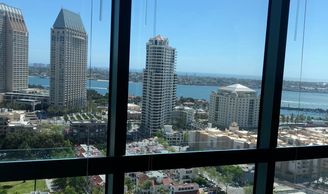Within the state of California, the Wage Orders provided by the Industrial Welfare Commission (IWC) have certain requirements for employers. For instance, they have to allow for non-exempt employees to use rest breaks within the midsection of a work day. This rest break has a basis of all the time worked in a given day. The lowest amount of time is to be a 10-minute break. After every four hours worked, another 10-minute break is allotted.
There are certain situations where a rest break is not mandated. An example of this would be where someone works less than 3.5 hours in a given work day.
Additionally, there is an exception to the statute requiring rest breaks. This is in the case of some employees working at a 24-hour home care facility. This is a circumstances where rest breaks may be limited. There is another exception as well. It is in the case of people who swim, dance, skate,or are involved in other performance-related jobs. Positions where serious physical activity is being performed require more rest breaks. This is especially true when rehearsing or shooting is taking place.
Another difference in the mandates concerns employees who would be in jobs such as construction, drilling, logging, and mining. Employers within these industries can overlap rest breaks, so that work is not interrupted. Once the work is done, then rest breaks can be taken. Also, employees in these industries do not need authorization to start a rest period. Additionally, employers in these industries have to provide employees with a makeup rest break in the same day. The other alternative is that they pay out for the time the rest break was for. The payout rate would be at the same rate the employee gets paid at. This payment would also have to be made within the same pay period.
These rest breaks need to occur somewhere that is especially designated as a place to take such breaks. Usually, this is somewhere every close to when employees normally work.
There are other slight differences, depending on what industry an employee works in. For example, a crew member working on a commercialized fishing boat, taking a trip extending into the following day, gets at least 8 hours of off-duty time within a single 24 hours. The 8 hour block of time is beyond time had for meals and rest breaks, as required by law.
According to the mandate, all employers have to give an amount of time for rest periods that is reasonable. This time should allow employees to provide breast milk to their infant children, if the need arises. Ideally, the break period for this would align with an already-occurring break period the employee has. If the situation does not allow for this sort of alignment, it does not have to be paid by the employer.
Employers should do what they can to give employees a place close by to where an employee works for lactation. This area should be a private place where lactation can be done. This is an area that can be within the workplace, as long as it fulfills the requirements. Employees should be able to lactate without being interrupted.
An employer may sometimes fail at providing employees with a rest break according to the law. In such a case, they have to pay employees an extra hour at the normal pay rate. This goes for every day when a rest break was is not given to an employee.
When using the term “rest break” it refers to a total of 10 minutes. This does not include the time it takes to get to the area where the rest break is going to be taken. An employer has to offer an adequate rest area while employees are at work. This is an area that has to be away from the bathroom.
What does California on rest breaks?
Employers within CA need to follow the mandates in the IWC wage orders. They are required to allow for a rest break lasting 10 minutes after every 4 hours of work. Ideally, this break should be taken in the middle of the work day. Employers may sometimes not allow for a rest break. If so, they will have to pay out an hour of pay for the normal pay rate for every day of work a rest break is not given.
Do rest breaks have to be within the middle of a 4 hour work day?
All rest periods should be given as near to the middle of a work day as possible. This goes for whether the work day is 4 hours, 8 hours, or somewhere in between. Employees have to get their mandated breaks at some point in the day.
What can be done if an employer forbids taking a rest break?
There is recourse you can take in a situation like this. According to the IWC wage orders, you need to be given a payout worth an hour of your normal pay. This goes for each work day that you are not allowed to take a rest break. In the case of an employer not paying this out, you have the option of filing a wage claim.
Can an employee work through their rest breaks in order to leave work early?
No, they cannot do this. You are not permitted to come in early or leave late in this situation.
Can employers force employees to stay at the workplace while employees take rest breaks?
No, they cannot. Employers are not allowed to restrict employees from moving about freely during rest breaks. Employees are allowed to completely absolve themselves of anything dealing with work during a rest period.
Can an employer require an employee to stay within radio communication with an employee?
No, they cannot. It has been decided by the courts that rest periods cannot be on-call. The rest break truly must be a period of rest, where employees have no obligations or responsibilities.
If an employee is a smoker, are they entitled to additional rest breaks?
No, they are not. According to state law, an employee is only allowed to have 10 minutes for every 4 hours they work.
If an employee needs to use the bathroom during the workday, does that count as part of a rest break?
No, it does not. Using the bathroom falls outside of the 10 minute break period provision. This is because the IWC requires break areas in the workplace to be away from the restrooms. Rest breaks are not considered the same as bathroom breaks. Employees are supposed to have access to a suitable area within the workplace that allows for the taking of rest breaks. A bathroom is specifically stated as not being such a place.
Although employees can use the bathroom when they need to, this does not mean that employers cannot place time restrictions on that use. On the other hand, employees are unable to extend their rest breaks because they needed to use the bathroom. The bottom line is that employers are not allowed to include time spent using the bathroom as part of a rest break.
When an employer does not allow for a rest break to be taken during an 8-hour workday, what can be done?
A wage claim can be filed. Alternatively, a lawsuit can be filed against an employer. This can be done to recoup the money totaling an hour of pay at your normal pay rate. This goes for every single work day in which a rest break was not given.
When an employer does not allow for a lactation break to be taken, what happens?
When an employee is not getting enough time, or a place, to lactate, they can report their employer to the DLSE Bureau of Field Enforcement. An employee may also file a claim with the DLSE as well. What will happen is that the DLSE will conduct an inspection of the workplace. If there are violations found, the employer will be fined $100 for every violation. The employer has the ability to contest these violations. Additionally, employees who have been retaliated against by their employers for lactating can file a claim with the DLSE.
Is there a statute of limitations when it comes to filing claims for rest break violations?
Yes, there is. The statute of limitations for filing a claim is 3 years from the moment a reported rest break violation took place. This is upheld by the California Supreme Court.
After an employee files a wage claim, what steps are taken?
You may consider filing a claim against your employer because of a belief that they violated the mandate requiring a rest break. If you do, you will have to file it with the nearest office of the DLSE.
Once this happens, your case will become assigned to a Deputy Labor Commissioner. This individual will ascertain how to move forward. They will take into account the circumstances surrounding the claim, along with information they can obtain about it.
They may decide, along with the employer and employee, to have what is called a conference. If this is the case, both the employer and employee will receive a notification in the mail. This notice will state the time, date, and location of where the conference will be held. The end goal of the conference is to ascertain whether a particular claim is valid or not. Additionally, there is the goal of resolving the claim without it going to a hearing. In the case of a claim staying unresolved after the conference, there is one of two options. Either things can proceed to a hearing or the claim can become dismissed because there was insufficient evidence.
If the claim goes to a hearing, there will be testifying under oath by both the employer and employee. Everything that is spoken at the hearing will be officially recorded. Once the hearing is complete, there will be either an Order, Decision, or Award, also known as an ODA. This ODA comes down from the Labor Commissioner and will be served to the employer and employees.
Either the employer or the employee has the right to appeal the ODA. They can do so and take it to a civil court. If this is the course of action taken, a court will set up the appeal for a trial. Both the employer and the employee will get a chance to offer up any evidence, as well as witnesses. Any evidence or testimony provided at the hearing will be separate from what the court decided. When an employer appeals, the DLSE may decide to represent an employee. This would occur if that employee does not have the financial means to get their own counsel during the proceedings of the court.
If an employee wins at a hearing, but the employer doesn’t pay, what happens?
There may sometimes be a case where an employee wins an ODA, but the employer is not paying up. The employer may also choose to not appeal the ODA. These situations are when the ODA favors an employee. They also occur while there is a lack of an appeal. Finally, they occur when an employer is not paying. When these occur, a judgment is placed against them. The DLSE enters a judgment that has the same weight as a court decision. This means that the employer must abide by the ruling. You have the option of collecting the judgment on your own or handing over the responsibility to the DLSE.
An employer may retaliate against an employee who brings up the fact they don’t get rest breaks. What happens?
If there is any sort of discrimination or retaliation against an employee for doing something like this, there will be consequences. For example, an employer fires someone because they were bringing up the problem of not being provided rest breaks. Another example would be that an employee threatened to file a claim given the lack of a rest break. In either of these cases, you have the ability and right to file a lawsuit against them.
Call or Write for a Free Confidential Consultation
If you or someone you love need an aggressive and compassionate attorney who will listen and aggressively protect your interest, we invite you to call attorney Brad for a free consultation.
$0 Upfront
There is no money upfront.
$0 Unless We Win
No Fee – Unless We Win
98% Success Rate
98% of clients’ cases won.
Insurance Insider
I’ve worked at a prestigious international law firm, Bremer Whyte et. al., serving major insurance companies by defending insurance companies and their insureds who were sued for millions of dollars.
I Care
“In both cases, he combined skills and passion to help these clients to maintain their self sufficiency and dignity.” SDLVP
My success is measured in the real differences made to my clients’ quality of life. I focus on achieving the most exceptional and fairest compensation for my clients.






